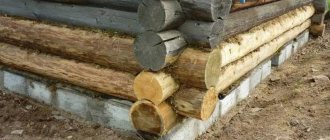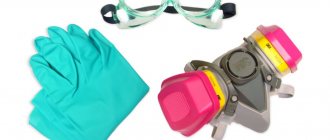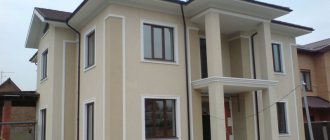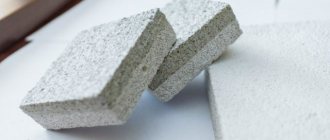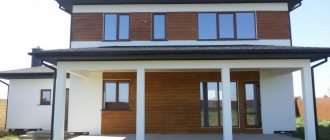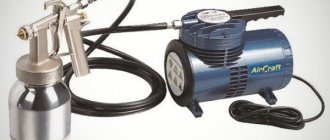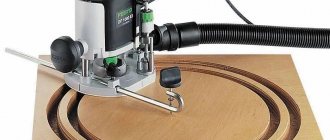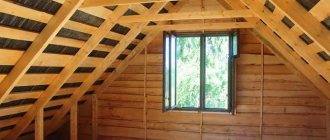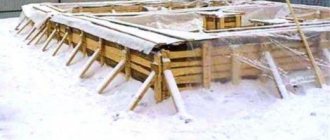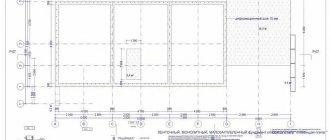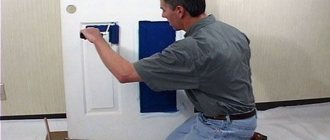Exterior wood paint is an important means of updating and protecting the façade. The high-quality composition will protect against the harmful effects of sunlight and precipitation.
Having chosen a higher-quality composition once, you will have to update it less often, thereby saving on re-application after a few years.
The safety and durability of the facade depends on whether you choose the right coating for treating the outside of your house.
Composition for wood
What paint is better to paint a wooden house
Good paint for facade work should have the following qualities:
- Moisture resistance. Paint for wooden facades forms a protective layer on its surface and prevents the passage of water into it;
- Frost resistance. It is important that exterior wood paint can withstand low temperatures and severe frosts, as well as freeze-thaw cycles;
- It had a UV filter and was not subject to fading or discoloration;
- Wear resistance. Wear-resistant wood paint for exterior use can withstand impacts from falling branches and exposure to chemicals;
- It had antiseptic properties: it prevented the formation of microbes, bacteria, and the establishment of bark beetles in wood.
You can practice at home with your child...
Properties
Facade paint differs from others in its properties, which explains the popularity of this product.
Among the characteristic features are the following:
- Waterproof. A layer of paint is used to protect the walls from moisture, which is why the product must have low absorption capacity. Otherwise, the facade will get wet and dirty. Also, due to high humidity levels, salts are deposited on the walls and cracks appear. The lower the level of water permeability, the better the paint;
- Wear resistance. Good resistance can be declared when the paint can withstand at least 5,000 cleaning cycles before it is completely erased;
- Paint consumption. As a rule, this parameter ranges from 100 to 300 g per 1 square meter. m, if painting is done in one layer. For surfaces of different quality, the consumption will also be different.
Facade paints are not used for interior decoration. They are not recommended for use in buildings with high levels of humidity, for example, baths and saunas. For cladding such buildings, it is better to use ventilated facades. In order for the paint to adhere better to the facade, the surface must be thoroughly cleaned and then coated with a fungicidal compound.
Rating of the best wood paints for exterior use
The best manufacturers of paints and varnishes for outdoor use are well-known brands.
Although some prefer to make the composition themselves:
If you want to buy ready-made, then this information is for you:
"Belinka" is a company that has been producing paint and varnish materials for more than 30 years. It occupies a leading position in the global market for the production of facade products;
Alpina is the most experienced paint and varnish company in existence for over 100 years. It produces paint and varnish materials for exterior and interior use. Its products are universal. "Alpina" produces compounds to create a protective layer not only on wood, but also on metal and other surfaces;
"Olsta" is a company that creates first-class wear-resistant materials. They do not contain harmful impurities, they are safe;
Premium products of the Dulux brand retain their protective properties in any weather and in any climatic conditions;
"Neomid" (more than 30 years of experience) produces odorless paints.
Antiseptics
During the construction period, the wood must be treated with an antiseptic to prevent the appearance of mold. Mold microspores are volatile. They spread easily and quickly in a wooden house, forming more and more new lesions. Mold enters a person’s respiratory tract, negatively affecting his health. Antiseptics are designed to prevent the appearance of mold and mildew and harmful insects in wood. Antiseptics are divided into water-based, oil-based, and solvent-based products. They are intended for external and internal work, for prevention and restoration. Let's look at the best antiseptics.
"Senezh trans"
The most popular antiseptic is: “Senezh”. It is an antiseptic that protects against wood-eating insects, mold and rot. This product does not wash out. Therefore, it can be used in places with high humidity: baths, saunas, cellars. The manufacturer guarantees the high quality and protective effect of the antiseptic for 30 years.
"Neomid 460"
An antiseptic protects surfaces from fungus and mold.
It is actively used for processing boards, timber, logs that come into contact with water and soil in cellars, baths, and bathrooms. Excellent adhesion to any surface. An environmentally friendly product that does not emit toxic substances. "Aquatex"
The material is used for priming wooden surfaces before applying the topcoat. Increases surface adhesion. It provides bioprotection against pathogenic microorganisms and insect pests. Prevents darkening and fading from ultraviolet rays, protects against precipitation.
How to cover walls in an unheated room
If you go to a store for construction and renovation goods, you will see a huge selection of interior paints. Since at the dacha you want to be as close to nature as possible, let’s consider the most environmentally friendly interior paints
Both have many good qualities:
- dry quickly
- do not have a strong odor
- adheres well to the surface
- can be used in rooms with high humidity
- are not afraid of temperature changes
- have good hiding power
- Great for interior work.
Acrylic wood paint for exterior use
The most popular are acrylic paint compositions. Their cost is low.
Quick-drying paint has increased moisture resistance and good adhesion. The range of colors is varied, it is important to use colors. Their base is water, the binding component is acrylate. Let's figure out which acrylic paints are most in demand.
"Belinka"
The coloring composition of the Slovenian manufacturer is famous for:
- reliability and safety;
- used for exterior woodwork: painting facades, window frames;
- the painted facade has a smooth, glossy surface;
- After the paint dries, a durable protective layer is formed on the surface. The protective film protects the wood from insects, pests, fungus, mold, and rotting;
- paint for a wooden house improves the natural grain of wood;
- a wide range of shades allows you to emphasize the natural color of wood and give the facade a luxurious appearance;
- The finishing of the house is not affected by ultraviolet radiation. The color remains the same as when painted after many years;
- long service life is an important advantage of Belinka acrylic paint;
- The product is not afraid of exposure to low and high temperatures, or rain.
Toplazur
The disadvantage of Belinka is the high consumption of the composition.
The fact is that wood easily absorbs the product when first painted. In order to paint a wooden facade well, it is necessary to apply 3 layers. The paint layer takes a long time to dry: 6-10 hours. To ensure that the surface is painted evenly and does not differ in color, so that joints are not visible, the entire facade must be treated.
"Alpina"
This German-made coloring composition confirms its high quality with the appropriate Certificate. It is intended for facades and terraces.
- the coloring composition is wear-resistant;
- prevents the passage of moisture into the wood;
- the elasticity of the composition resists vibrations and protects against the formation of cracks in the wood during shrinkage;
- due to high vapor permeability, condensation does not form, fungus and mold do not appear;
- the product is characterized by low consumption of the composition during surface painting;
- When using it, it is possible to tint the façade surface in any color you desire.
An important disadvantage of the paint and varnish material is the high price and the possibility of streaks appearing after rain.
"Olsta"
The acrylic paint product has a smooth, streak-free surface. Exterior wood paints are produced in Finland. Paint and varnish products are bottled at a Russian plant in Tver. Finnish equipment and technology help Russian industry produce high-quality products at a low price.
- it is safe, does not contain harmful substances and chalk;
- it is anti-allergenic and does not cause allergic reactions;
- resistant to physical stress;
- does not wash off;
- composition consumption is economical;
- it contains antiseptic additives that prevent the formation of rot, mold and mildew;
- intended for wooden facades, treated and untreated plank surfaces;
May be interesting: How to cover the ceiling of a wooden house inside cheaply and beautifully
"Liberon"
Manufacturer: France. It arose back in the 19th century. Painting with premium products gives woodwork new life. The street appearance of the frames and façade after painting with Liberon is luxurious. Every year the company develops a new range of products. The paint forms a durable protective layer.
Is it possible to paint a facade at sub-zero temperatures?
In any weather conditions, the principles of painting work remain unchanged and require mandatory preparatory measures to ensure reliable adhesion of the paintwork to the surface being painted.
Preparing the base for winter painting
This is the most critical process, especially for porous and cracked bases such as concrete. It is significant that it is recommended to paint concrete facades after a year, and winter is not the best time for this. Priming large areas is problematic due to freezing of the spray gun nozzle, low brush performance, and insufficient coverage of all cavities and cracks with a roller.
It is strongly recommended to paint wood within one construction season, but it is preferable to do this no later than autumn, when you can choose fine days with temperatures above +5°C. In winter, preparation and further painting are difficult due to the presence of moisture in the pores of the wood. By turning into ice, it prevents the material from being fully saturated on frosty days. Painting work can only be carried out if there is no moisture in the pores, which is checked by sticking adhesive tape measuring 5x5 cm. If condensation does not appear on the adhesive tape after 24 hours, such a surface is suitable for painting.
The worst period for painting is during daily temperature fluctuations from +5 to -5°C, leading to intense condensation.
Alkyd paint
Alkyd paint compositions have a glossy surface that gives it an attractive appearance. The paint consists of film formers: latex and resin. The coloring composition also includes pigments, solvent, fillers, and additives that give the paint elasticity. A feature of alkyd paints is their uniform application to the surface and rich color. After painting, a thin film is formed on the surface, protecting it from external influences.
The paint has low frost resistance and vapor permeability. The surface does not breathe, does not allow air to pass through. Alkyd paints have a pungent odor that persists even after drying. A primer should be applied before painting.
"Tekc pro"
- the product is used for any premises;
- is highly resistant to water;
- harmful microorganisms: mold and mildew. Penetrates deeply into the surface of the wood, affecting bugs and protecting it from putrefactive processes;
- The product is resistant to chemicals. To wash walls and floors painted with this paint, you can use any detergent;
- has no smell;
- A wide range of shades helps you choose the color of your choice. No tinting required;
- The protective layer is durable.
The disadvantages of paint include high consumption and long drying time. When painting a smooth surface, smudges may occur.
"Tikkurila empire"
- water-alkyd based dye contains bioprotective substances;
- resistant to water, temperature changes, friction, chemicals. The painted surface can be washed with abrasives and sponges, nothing will happen to it. It will retain its smoothness, strength and other positive properties;
- it does not emit harmful fumes, therefore it is suitable for children's institutions and medical centers. Anti-allergenic;
- painting with it is easy and pleasant because it does not smell;
- quick drying, low consumption will save money and time on painting.
"Vincent A-3"
- alkyd-based enamel forms a highly durable glossy coating;
- the protective layer saves the tree from early rotting;
- semi-matte shine emphasizes the natural structure of the wood;
- paint surfaces in 2-3 layers. The low consumption of the composition allows you to save the family budget, while at the same time updating the wooden covering;
- The product applies easily, painting evenly on any wooden surface.
The disadvantage is low wear resistance: it fades from bright sunlight and cracks from temperature changes.
Technology and application nuances
No special skills are required when working with acrylic paints; on the contrary, they are characterized by ease of application and lack of drips. However, the lion's share of success lies in careful preparation of the surface to be painted and compliance with the manufacturer's recommendations.
Preparing the base
The specific algorithm of work is determined by the type of base - if wood often requires sanding, then it is enough to clean concrete/brick/stone from dirt and dust. But in any case, the base must be clean, durable and necessarily primed, preferably with a primer from the same manufacturer as the paint. At a minimum, the primer should be compatible with the acrylic paint. Again, primer for wood should have an antiseptic additive, and for metal – with anti-corrosion properties.
Inngrid Member of FORUMHOUSE
I'm about to paint a cast iron battery, I'm choosing from acrylic heat-resistant paints/enamels. They write everywhere that before painting with them it is better to prime the surface with anti-rust primer or a primer directly over the rust (there is rust on the surface of the battery in some places). What primers are suitable for acrylic enamel for radiators?
Yuri Sokolov
There are special primers for rust. There is a 3-in-1 enamel primer, but this is not for batteries; here it’s better to use a primer first. Cover the pre-prepared heating radiator with it. If you paint with acrylic paint, you can use almost any acrylic primer; if the volume is small, take the primer in an aerosol can.
The main thing is that there must be soil. Otherwise, not only will the consumption of not the most budget paint increase, but the quality of the final layer will also deteriorate. It is also important to observe the time interval between layers. How long the primer needs to dry depends on the specific brand, but modern products usually do not require too much downtime and dry in a few hours. If we are talking about loose surfaces with high absorbency, the primer is applied twice - the second layer after the first has dried.
Considering that the composition dries quickly enough so that you don’t have to spend time and tediously washing surfaces that are not intended for painting, you should use masking tape before applying paint. It will also help you get clear, even lines without bleeds if there is a gradation in color or imitation of panels.
Oil paint
Oil paint has high adhesion to the surface. But it smells unpleasant and can give you a headache when painting. The smell does not disappear for a long time. Oil-based paints typically take a long time to dry. It is better to paint in dry weather. It quickly fades from ultraviolet radiation and changes its color. It is best to use a light-colored oil-based paint product. Its burnout is not so noticeable on it. It has a short service life of less than 7 years.
"Lacra MA-15"
The coloring composition is intended for external and internal use, for application to wooden and metal surfaces. To make the surface shiny and attractive, it is important to prepare it for painting: remove the old layer, remove uneven surfaces, and prime it. The composition is wear-resistant, forms a protective layer from external influences. It takes a long time to dry.
"Tikkurila teho"
Coloring agent that meets international quality standards.
- an important indicator of the coloring composition is its hiding power;
- it is intended for processing plank surfaces, fences, facades;
- high elasticity, strength contributes to paint durability, long service life of 7 years;
- The color palette is varied. It covers 120 colors and tones of the spectrum;
- It dries in 2-4 hours. When painting, it does not leave smudges.
"Teknos Wintol"
- high quality paint. Despite the high price, it is popular among buyers;
- does not discolor when exposed to sunlight;
- It is laid on the surface of the facade in an even layer, evenly distributed over it. Specialists from construction companies use a product for painting premium surfaces;
- the product does not change its properties under the influence of precipitation and temperature changes.
- The 30-year warranty and positive reviews about it allow you to be convinced of its reliability. Manufacturer: Finland.
What type of wood paint is best?
“Which paint to choose for wood?” is a question many homeowners ask. The choice depends on many factors: microclimate, wood structure, purpose of the room. You should pay attention to the region of operation (warm or cold) and what negative impacts the façade of the house will be exposed to.
When choosing, you should not pay attention to the smell, long drying time, or environmental friendliness. The harmful layer will quickly evaporate under the influence of external conditions. It is important to pay attention to the service life of the substance, its wear resistance and strength.
It is important to choose the material strictly individually.
The best type of paint is acrylic.
They are wear-resistant, dry quickly, have good adhesion and an attractive appearance.
How to paint over old paint
People often ask whether it is possible to paint over an old layer. Professionals do not recommend applying a coloring composition to the old coating, because if it comes off, the new layer will also suffer. If the top layer of paint is light, then dark spots of the previous coloring matter that previously covered the facade may appear through it. In addition, not all colors are suitable for each other. The composition will be difficult to apply, adhesion with old paint is low.
In some cases, it is easier to sheathe a house than to repaint it. Finishing with siding is the most common budget option.
You can paint over the previous layer if it is perfect and does not lag behind the surface. Similar paints and varnishes are applied to the old layer. For oil paint, an oil composition or alkyd enamel is suitable. Sometimes you can use an acrylic paint without removing the old layer, but the surface should be primed. To apply oil paint to oil paint, you should remove the gloss, sand the surface and only then paint.
Water-based paint will adhere to glossy paint only if a primer is applied or the surface of the old coating is sanded. This is necessary in order to ensure high adhesion of surfaces to each other. It is not recommended to paint with oil paint on nitro enamel, because bubbles and cracks will form on the new layer, which will lead to peeling and disruption of the aesthetics of the layer.
Subtleties of application
Surface painting is a rather complex process that requires maximum care. If there is old paint on the walls and it is in good condition, then you do not need to wash it off - you can apply a new layer to it
But, if the old material has already cracked and began to crumble, you will need to thoroughly clean the walls. Before you start applying paint, check to see if the walls are ready to be painted. To do this, use a wooden block.
When all defects have been eliminated, the surface must be checked for its ability to absorb moisture. To do this, run a damp sponge along the wall. If the mark immediately disappears, then the wall must be primed. When you start applying paint, divide the entire wall into several sections in advance. They can be separated by pipes, bends, projections and the like. It is convenient to apply paints and varnishes using a roller using up and down movements. In hard-to-reach places it is more convenient to use a brush.
When one area has already been painted, there is no need to wait until the entire surface is dry. Proceed to paint the other one. There will be no difference in the layering. Please note that the direction you apply the paint depends on how many coats you plan to apply. For example, if there are only two layers, then it is better to apply the first horizontally, and the second vertically.
Useful tips
- If there are metal parts on the facade, then before priming they should be coated with an oil or alkyd composition.
- The wood must be protected with several impregnations before painting, last but not least with a water-repellent agent.
- After the impregnation has dried, the wood is sanded to smooth out the rough surface.
- To remove old paintwork from a wooden surface, use a wire brush, sandpaper, spatulas, or the tool presented in the video above.
Correctly chosen paint for wood for exterior use will create favorable conditions for the durability of the facade. Its pleasant appearance and long service life will delight you for many years.
